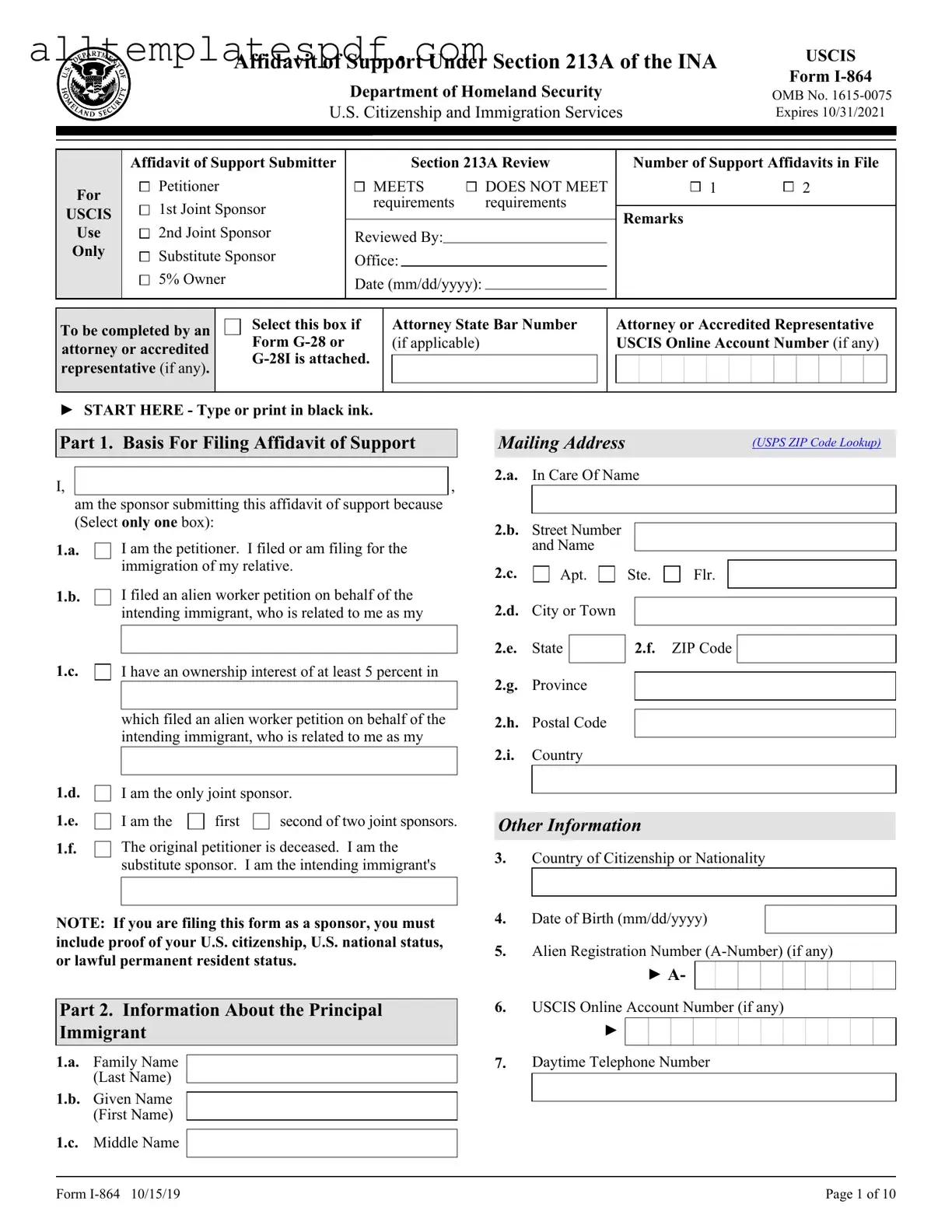Filling out the USCIS I-864 form can be a daunting task. Many people make mistakes that can delay their application or even lead to denial. One common mistake is failing to provide complete information. Each section of the form requires specific details. Leaving out information can raise red flags for the reviewing officer.
Another frequent error is not using the correct income figures. Applicants often miscalculate their annual income or fail to include all sources of income. This can result in an inaccurate portrayal of financial stability. It is crucial to ensure that all figures are accurate and up-to-date.
Some people forget to sign the form. A missing signature can halt the processing of the application. Always double-check that the form is signed before submission. Additionally, not including the required supporting documents is another mistake. The I-864 form must be accompanied by proof of income, tax returns, and other relevant documents.
Many applicants also overlook the importance of using the correct version of the form. USCIS updates forms periodically, and using an outdated version can lead to complications. Always download the latest version from the official USCIS website.
Another common issue is misunderstanding the household size. Applicants may not accurately calculate how many people are part of their household. This number affects the income requirements and must be correct. Misrepresenting the household size can lead to significant problems.
Some individuals fail to provide the required information about their sponsors. It is essential to include details about the sponsor’s income and assets. Without this information, the application may be incomplete. Additionally, applicants sometimes underestimate the importance of providing clear and organized documentation. Disorganized paperwork can confuse the reviewer and lead to delays.
People often neglect to check for consistency across all submitted documents. Inconsistencies between the I-864 form and other forms can raise questions. It is vital to ensure that all information matches across different documents.
Finally, many applicants underestimate the importance of reviewing their completed form. Taking the time to read through the entire application can help catch mistakes before submission. A careful review can save time and prevent unnecessary complications.
